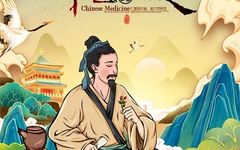Click the blue text above to follow us
The most fulfilling life is one of virtue, and the happiest is one of both virtue and talent!
Spread: National Studies | Culture | Parenting | Education | Traditional Chinese Medicine | Health
Convey: Love the Earth | Love all things | Positive energy
It is often said that Qi stagnation leads to blood stasis, spleen and stomach Qi stagnation, liver Qi stagnation, and lung Qi obstruction. What is Qi stagnation? What effects does it have on the human body? What should one do when Qi stagnation occurs?
“Qi stagnation” refers to a state where the local movement of Qi within the body is obstructed, meaning that the Qi in the organs and meridians is not flowing smoothly. To understand and resolve Qi stagnation, one must first comprehend the movement patterns and forms of Qi within the human body.
Traditional Chinese Medicine categorizes the movement forms of Qi in the human body into four basic types: “ascending, descending, exiting, and entering”. All tangible objects and living beings must have the movement of Qi’s “ascending, descending, exiting, and entering” as long as life exists.
The internal environment of the body, including organs, meridians, and various microscopic tissues and systems, serves as the venue for the ascending, descending, exiting, and entering of Qi. When this movement ceases, it signifies the end of life activities and the arrival of death.
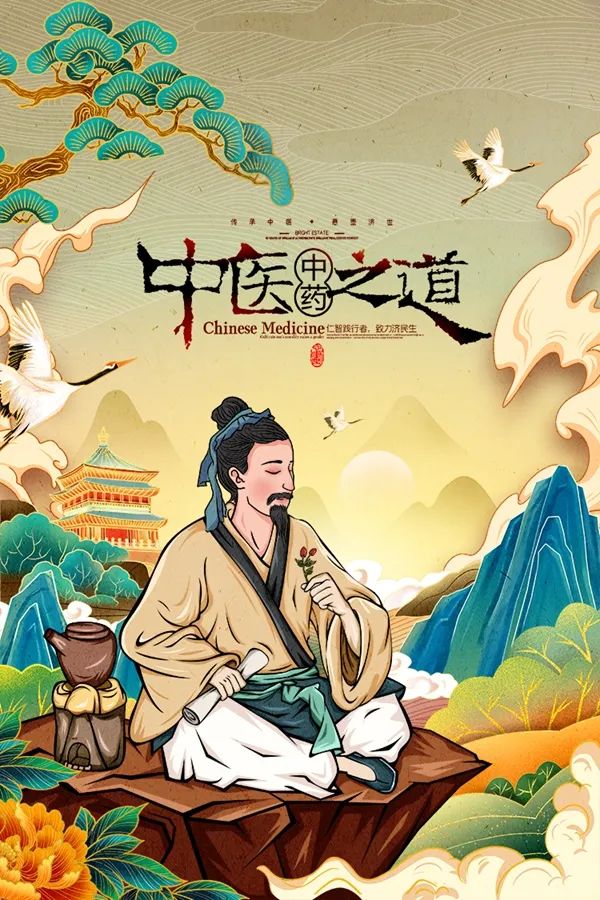
The movement of Qi within the body is collectively referred to as “Qi mechanism”. The process of ascending, descending, exiting, and entering of Qi is realized through the functional activities of the organs, hence the term “organ Qi mechanism”.
The body transforms the air and food ingested into substances and energy such as Qi, blood, fluids, and essence through the ascending and descending movements of the organ Qi mechanism, completing the metabolic process. When the organ Qi transformation functions normally and the movements are orderly, the body can continuously metabolize with the external environment, ensuring the material basis for life activities. This process is also the continuous self-renewal of Qi.
For example:
The respiratory function of the lungs: exhalation—exiting, inhalation—entering, dispersing—ascending (the lungs disperse defensive Qi to the surface, skin, and hair), and descending (the lungs pass the inhaled clear Qi down to the kidneys for Qi absorption).
Digestive function: the spleen governs the ascending of clear Qi, and the stomach governs the descending of turbid Qi. The entire process of digestion, absorption, transportation, and excretion of food relies on the normal physiological functions of the organs and the smooth flow of Qi.
The body’s fluid metabolism: the lungs—governing dispersing and descending, the spleen and stomach—transporting and transforming, the kidneys—vaporizing and excreting, with multiple organs coordinating in the process of fluid metabolism.
From a localized analysis, not every physiological activity must fully possess all four movement forms of Qi’s ascending, descending, exiting, and entering. Instead, depending on the function, each has its emphasis. For example, the liver and spleen primarily ascend, while the lungs and stomach primarily descend. The coordination and balance between the physiological functions of the heart and kidneys (the yin and yang intersecting, with heart fire descending and kidney water ascending) are all specific manifestations of Qi movement.
The normal and coordinated balance of Qi’s ascending, descending, exiting, and entering movements is called “smooth Qi mechanism”. If the balance of ascending and descending movements is disrupted, it is termed “Qi mechanism disorder”, a pathological state. “Qi mechanism disorder” can lead to pathological changes such as Qi stagnation, Qi counterflow, Qi sinking, Qi obstruction, and Qi collapse.
Qi stagnation refers to the stagnation and obstruction of the Qi mechanism. It manifests as an obstruction in the flow of Qi in certain local areas of the body. This is mainly due to emotional distress (internal stagnation), lack of spirit movement, or local obstruction by pathological products such as phlegm, dampness, food accumulation, and blood stasis, or due to the invasion of pathogenic Qi, or factors such as weakness and Qi deficiency.
The pathological manifestations of Qi stagnation include: Qi stagnation in a certain meridian or local area can lead to corresponding symptoms of fullness and pain in that area. Qi stagnation impedes blood flow and fluid distribution, thus severe Qi stagnation can lead to blood stasis, water retention, and fluid stagnation, resulting in pathological products such as blood stasis and phlegm-dampness.
Since the liver’s ascending and the lung’s descending play an extremely important role in adjusting the overall Qi mechanism, Qi stagnation can lead to spleen and stomach Qi stagnation, liver Qi stagnation, or lung Qi obstruction. Moreover, dysfunction of the spleen, stomach, liver, and lungs can also cause Qi stagnation.
Although the manifestations of Qi stagnation vary, the common characteristics are generally fullness, distension, and pain, which is what Traditional Chinese Medicine refers to as “pain due to obstruction”. For example:
Qi stagnation in the spleen:
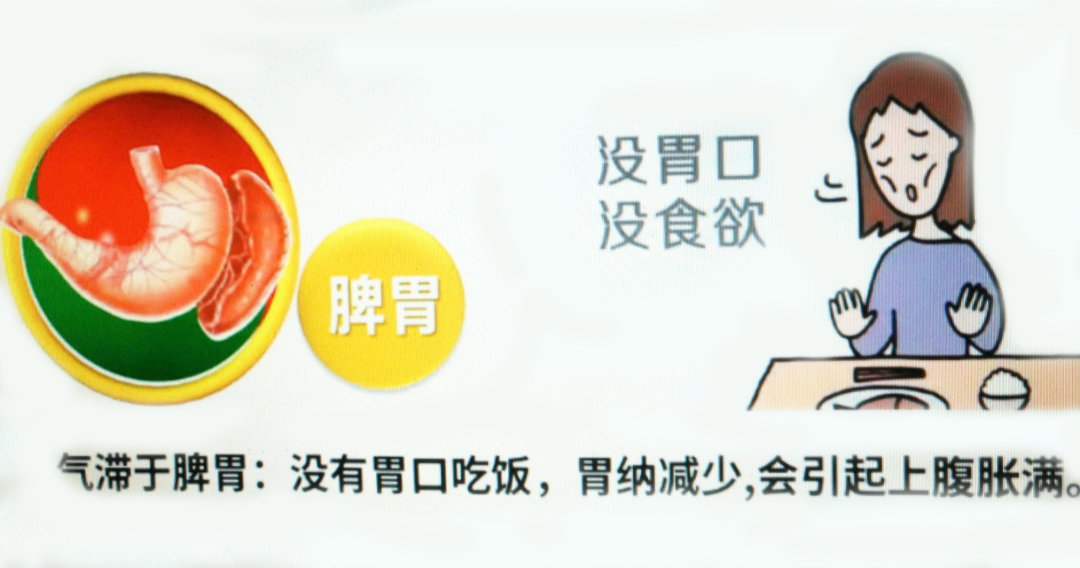
The spleen and stomach are responsible for digestion and absorption. The spleen governs the ascending of clear Qi, and the stomach governs the descending of turbid Qi. If the ascending and descending of Qi in this area is obstructed, it will manifest as symptoms in the digestive tract, causing reduced appetite, fullness, and pain, leading to a lack of desire to eat. For example, some patients report fullness in the upper abdomen (also known as the epigastric region), lack of appetite, or symptoms such as belching and constipation.
Qi stagnation in the liver:
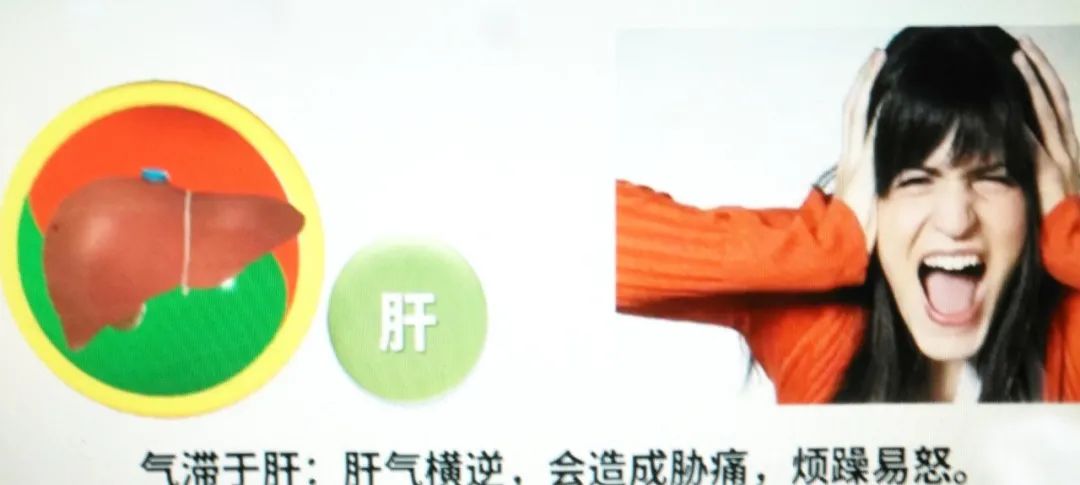
The liver governs the smooth flow of Qi (ascending, regulating Qi movement, promoting the spleen and stomach’s transformation functions, and regulating emotions) and stores blood.
Liver Qi stagnation is often caused by emotional distress leading to the liver’s failure to regulate, resulting in poor Qi movement and the inability to effectively expel turbid Qi, leading to dysfunction of the liver. The liver prefers smoothness, and its meridians are distributed along the two sides of the ribs. When liver Qi stagnates, the liver’s regulatory function becomes abnormal, blood flow is impeded, and liver Qi may counterflow, causing pain in the heart, abdomen, and ribs.
Liver Qi is most easily affected by emotional changes, hence pain may come and go. Common clinical symptoms of patients with liver Qi stagnation include emotional depression or irritability, bitter and dry mouth, belching (liver Qi invading the stomach), etc. Female patients may exhibit endocrine disorders, menstrual irregularities, and dysmenorrhea.
Qi stagnation in the lungs:

The physiological functions of the lungs include: governing Qi, controlling respiration, dispersing and descending, and regulating the water pathways (i.e., facilitating the movement and excretion of fluids). If lung Qi is obstructed, symptoms such as cough, excessive phlegm, and chest tightness will inevitably occur.
Qi stagnation in the meridians:
Depending on the meridian and location of Qi stagnation, it can lead to corresponding meridian diseases or musculoskeletal disorders. For example, joint pain is often caused by local meridian stagnation due to various reasons.
Qi stagnation and blood stasis:
Qi is the commander of blood; excessive Qi stagnation can also lead to blood stasis. Blood stasis is a pathological state characterized by slow and obstructed blood circulation. Due to the poor movement of Qi, blood flow is obstructed, resulting in Qi stagnation and blood stasis; it can also occur simultaneously due to internal injuries or external trauma.
Generally, the liver governs smooth flow and stores blood, and the liver’s regulation plays a key role in the smooth Qi mechanism. Therefore, Qi stagnation and blood stasis are often closely related to abnormalities in liver physiological functions.
Furthermore, since the heart governs blood vessels and blood flow, when the heart’s physiological function is disordered, blood stasis often appears first, leading to Qi stagnation. In clinical practice, Qi stagnation and blood stasis commonly present with symptoms of fullness, pain, bruising, and masses.
This article is mainly derived from Mr. Xiong Chunjin’s “Dao Medicine” chapters on “The Movement and Forms of Qi” and “The Internal Causes of Disease Mechanisms”.
What insights do you have after reading this article?
✎ Feel free to comment and share with us
Editor: Ai Li
Recommended Reading
Taiji and Taiji Ball
Understanding the Transformation of Fortune and Wisdom
Decoding the “Heavenly Tree” of Sanxingdui—The Tree of Life of Self-Cultivation

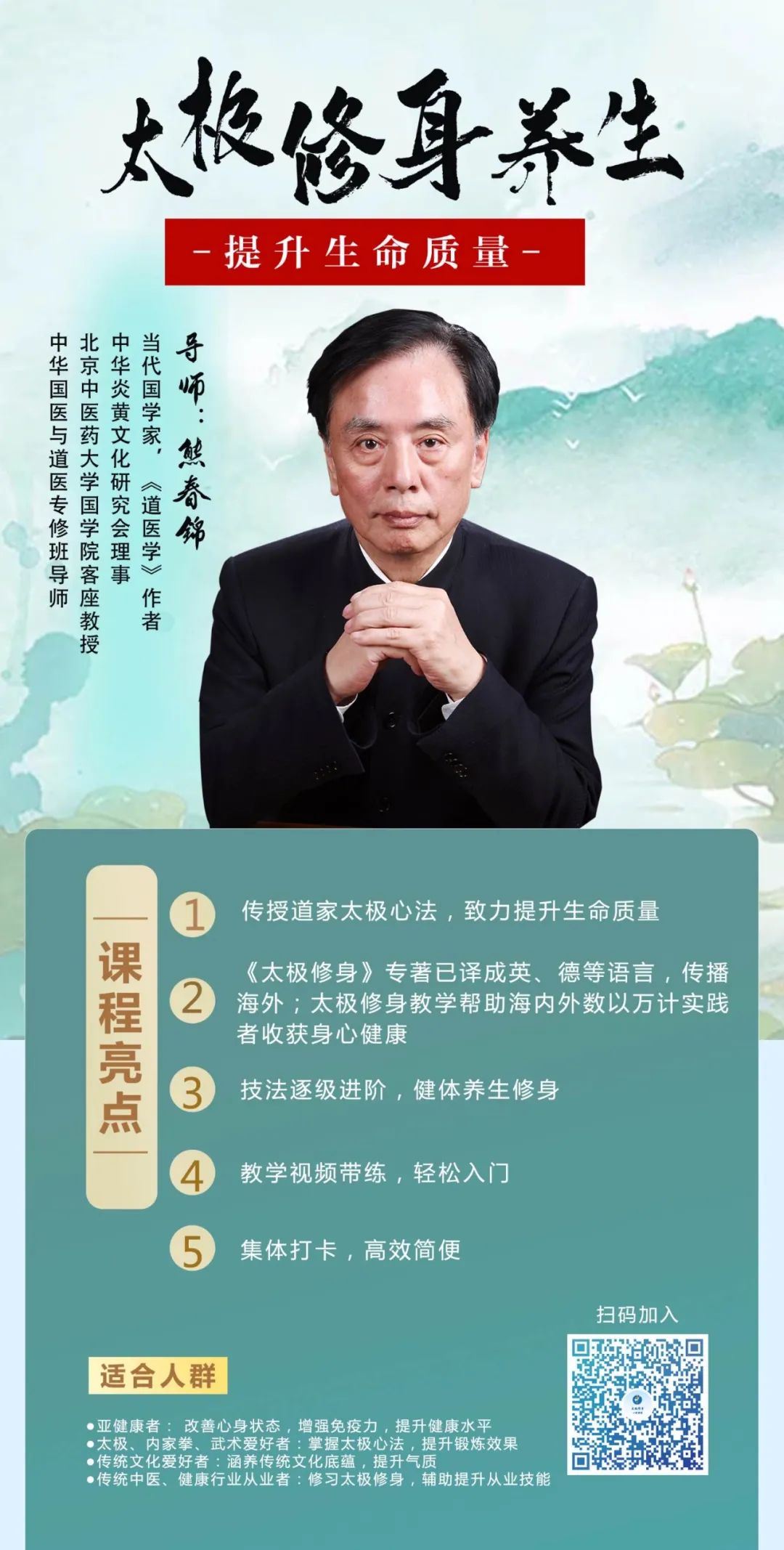
High-definition video courses
Once subscribed, you can watch it forever
Long press to recognize the QR code to subscribe to the course!
Copyright statement


Any reproduction or citation of images, audio, video, and text materials published by this public account must indicate: Reproduced from the WeChat public account “Dao Medicine and Self-Cultivation” (WeChat ID: daoyixsx).
All original content of this public account is owned by the author and the WeChat public account “Dao Medicine and Self-Cultivation”. If there is any infringement, this public account reserves the right to pursue legal responsibility.
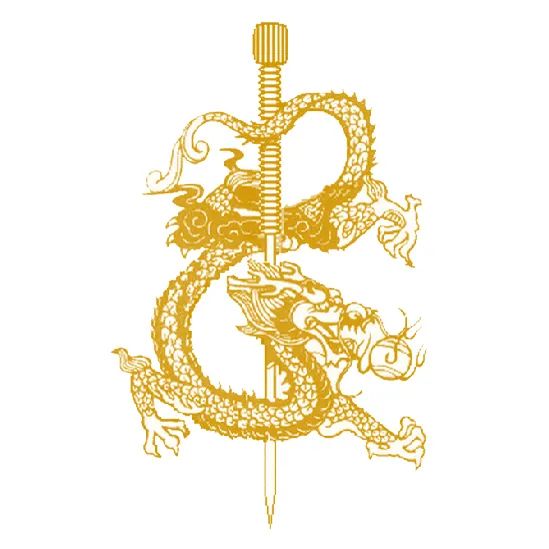


Spread: National Studies | Culture | Parenting | Education | Traditional Chinese Medicine | Health
Convey: Love the Earth | Love all things | Positive energy
Every simple share may illuminate a life!
▼Long press for 2 seconds to recognize the QR code to follow us
Feel free to recommend us to your family and friends!
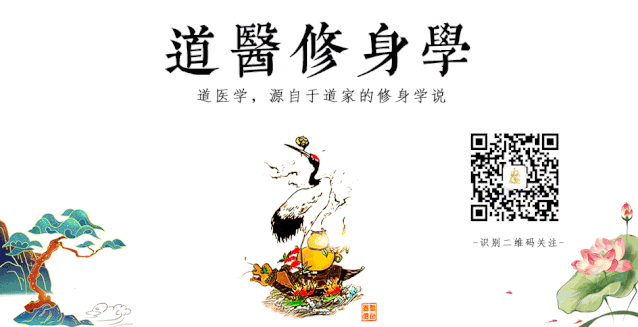
Disclaimer: All images and texts published by this account are for sharing and communication purposes. Some content sourced from the internet is owned by the original authors and websites. If there are any questions, please let us know, and we will handle it properly.
Tap “Looking” & “Like”, So you won’t miss out in the public account👇

